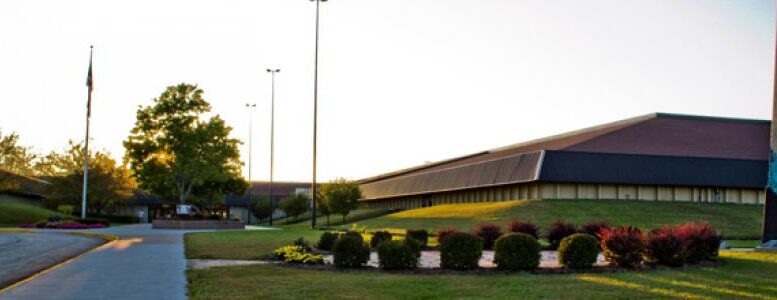The Illinois Mathematics and Science Academy has become more than just an institution striving for academic excellence–it catalyzes economic growth in Aurora. Since its establishment in 1985, IMSA has not only supported gifted students throughout Illinois, but also positively impacted the local economy through innovation. Due to IMSA’s unique and rigorous curriculum, the demand for qualified and specialized educators has increased local job opportunities and as IMSA has continued to expand with an influx of students and competition, its reputation has directly contributed to rising housing demand in the surrounding neighborhoods and businesses. Ultimately, through its values of academic rigor and community outreach, IMSA continues to shape our future of innovators and stimulate the local GDP.
Through its emphasis on STEM and innovation, IMSA drives economic prosperity through leveraging strong alumni connections and increased funding. In the fiscal year 2022, the academy received $1.7 million in grant funds beyond its state appropriation, accounting for 35% of its total capital. Beyond state funding, the school has sought growing its private funding. The school’s significant alumni network is crucial for upstanding its mission. Notable donors including Steven Chen, Mike McCool, and Sam Yagan, contributed to the $2.5 million alumni donations. These generous donations helped create IN2 and have allowed IMSA to expand innovative programs and partner with local industries.
Facilities like the Innovation Hub help local businesses scout for skilled labor in STEM. IMSA’s adopted curriculum is beyond traditional textbook learning environments, with distinctive STEM courses offered, the rigor requires educated individuals to enter the schools’ workforce. Currently, 98% of IMSA educators hold a master’s degree, with over half possessing PhDs in their respective fields. This focus on high-quality education allows IMSA to offer higher-paying job opportunities and attract top-tier talent, further growing the economic opportunity internally within the school.
IMSA’s reputation as a top-ranking school has sparked a rise in housing demand throughout Aurora, particularly West, as families seek to live near the institution. Aurora’s overall population has increased 122.1% over the past 40 years (U.S. Decennial Census). The rise in population has boosted the property values of bordering neighborhoods and spurred the rapid development of homes. Redfin’s housing market statistics state the surrounding zip code (60506) has a sale-to-list price of 101.8%. Such trends indicate a strong demand for the property as buyers are willing to invest more than the asking price (1.8% more), suggesting competitive bidding against multiple potential buyers.
Furthermore, a substantial number of homes in West Aurora were constructed during the 1990-2000s period. Today, almost 50% of homes since 1985 are newly built. An upward trajectory of home appreciation rates, averaging 15-17% every five years, concludes homeowners investing in West Aurora will see substantial returns on their investments. Since the opening of IMSA in the late 1980s, the region has grown in the real estate market.
Supporting local businesses, from fast food chains to medical clinics, the academy’s student and staff body creates a consistent demand for essential services and everyday convenience in the Aurora community. Every week, IMSA students have the opportunity to take shuttle trips to grocery stores, including Target, Walmart, and Woodmas. Local fast-food joints on Orchard Road are within walking distance allowing efficient access. With the availability of these opportunities, these businesses depend on the student body for revenue. The growth of medical clinics around Aurora is a clear example of agglomeration. Major pharmaceutical corporations such as Walgreens and CVS have chosen to invest near IMSA and surrounding schools. With 13 pharmacies and 14 clinics within a five-mile radius, this concentration of healthcare providers has risen in the past decade to meet the needs of students. IMSA has created a network of specialized medical services in the West Aurora area that enhances economic opportunity through high-paying jobs, improving healthcare quality, and promoting a competitive environment.
Aurora’s economy is attributed to the contributions IMSA has offered, yet these efforts go hand-in-hand with long time industries who have helped and continue to benefit the greater community. It is critical to note the majority of Aurora’s economy was built from industrial-manufacturing, transportation, and healthcare industries. Major establishments such as BNSF Railway, RUSH Copley Medical Center, and Thermo Fisher Scientific have vastly contributed to the demand and foundation of Aurora’s growth. We must acknowledge the history and industrial sites that have helped build our academy, while also crediting IMSA’s contributions to STEM and education. Through the rise of medical clinics, public transportation corporations, and an expanding engineering sector, together these industries have been able to ensure Aurora’s economic success.
**Editor’s Note: This article was updated on 11/14/24 to correct statements made about IMSA’s alumni donations and state appropriation that were inaccurate. Previously, the article stated in error that alumni donations formed an endowment rather than funding the creation of IN2 and that $1.7 million represented IMSA’s state appropriation rather than its grant award monies.






This article is so cool! It’s really interesting to see how IMSA has affected the economy.